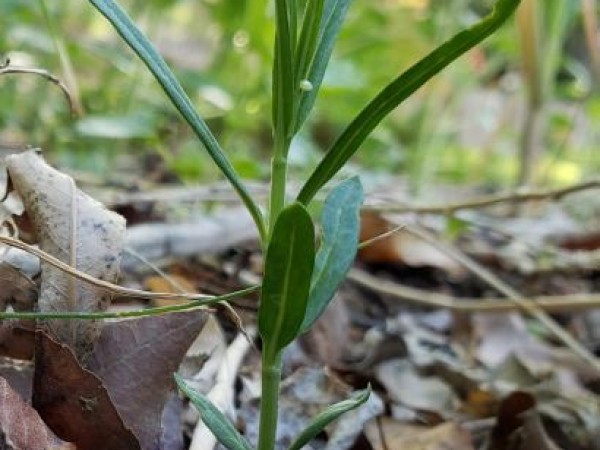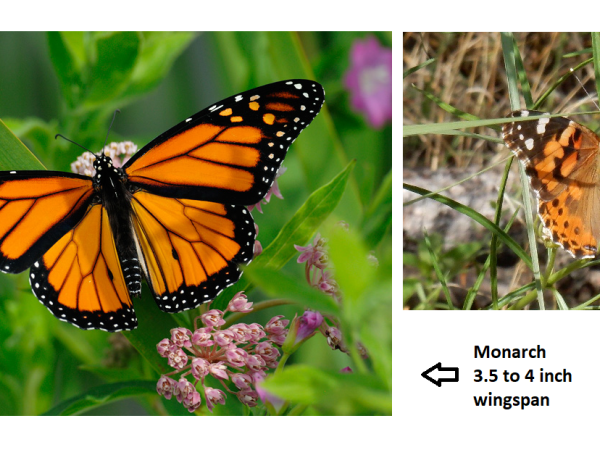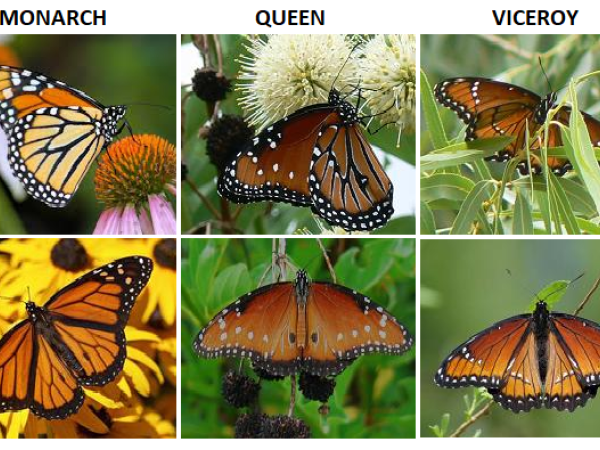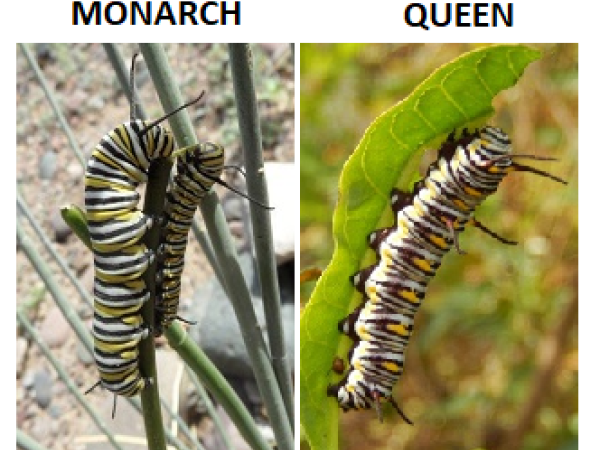Western Monarchs 2019 Spring Report#14
By Gail Morris
May 15, 2019
A Quiet Week
There was little indication of northward movement in the monarch spring migration in the West this week, but reports of larvae are now appearing more frequently especially in the lower desert locations. We expect to hear of more sightings of fresh and new monarchs soon as they eclose and continue their movement into the Western summer breeding range. Monarchs in the West have been hampered this Spring by a series of cool weather systems stalling their movement as they climb to higher elevations and head North. The unusual cooler and wetter weather for this time of year has also slowed their life-cycle as they progress as a larvae and pupae.
Painted Lady Explosion!
Hundreds or thousands? “So many Painted Ladies we can barely count!” In some locations in Northern California, Oregon, Utah and Colorado, people have been amazed at the sheer number of Painted Ladies dashing across roads as they were driving. Most reported a Northwest flight bearing with large numbers of butterflies flying together. Why are we seeing so many Painted Ladies this Spring? Just the right combination of abundant winter rains resulting in robust and healthy host plants, a perfect place for females to lay their eggs. Painted ladies have more than 100 host plants! Most common are thistles and hollyhocks but mallows like cheeseweed, legumes and fiddleneck are well-used, too. This has resulted in an enormous number of Painted ladies traveling throughout the West.
Some people confused the Painted Ladies with Monarchs. Look at the photo on the right so you can identify them when they visit you. Some reported “baby monarchs,” because their colors look similar. Remember that once a butterfly ecloses and pumps up their wings they never grow any larger. Painted Ladies are smaller butterflies than Monarchs. Can you see the differences between a Painted Lady and a Monarch in the photo on the right? They fly differently as well. While Monarchs like to glide when they fly, Painted Ladies instead have a fast and seemingly erratic flight. If you are fortunate to experience the extraordinary Painted Lady migration this year in the West, you might agree that they are beautiful in their own right!
Queens, too!
Monarchs aren’t the only milkweed butterfly! Queen Butterflies, Danaus gilippus, also use milkweed as their host plant in the Southern tier of the Southwest. This week several sightings of queens have been reported as they reappear in the region. Queens are the closest relative to monarchs; they share the same genus. Both adults and larvae are easily confused with monarchs because they look similar. There are easy ways to tell monarchs and queens apart.
While the abdomen of a monarch is black, a queen has a brown abdomen. The ventral sides (undersides) of the wings are very similar, but the dorsal sides (topside) are different. The familiar coloration of a monarch wing’s dorsal side has a distinct pattern of black veins separating orange cells while the queen looks more like a smooth layer of cinnamon. On the queen, you’ll notice white dots in the orange. Meanwhile monarchs have a brighter color of orange and monarch’s white markings appear only in the black. Their larvae have similar white, black and yellow stripes but in a different pattern. Queens have three pairs of filaments while monarchs have only two. Sometimes you may find both monarchs and queens on your milkweed. Keep an eye out so you can tell the difference.
Viceroys
Sightings of Viceroys complete the “royal family” in the Southwest. It’s easy to confuse the Viceroy for a Monarch this time of year while you are looking since their color and size are similar. But Viceroys have a thin black band across their hindwings. In the Southwest this band can be faint and instead you’ll see a line of white dots on the Viceroy’s hindwing. There are more Queens than Monarchs in the Southwest and Viceroys mimic the Queen butterflies. Compare the Southwest Viceroy with the Viceroy more widespread across the rest of the country.
Where Next?
Soon we expect to receive more reports of monarchs further north in the West, as they continue their Spring migration. The cooler weather this past week has slowed their movement and their life-cycle. Where will Western monarchs appear next? Keep an open eye and share what you see here on Journey North!
Please Report Your Sightings
Help us to find answers to these and other questions. Let’s keep following monarchs and their movements throughout the West. Please join Journey North and our partners who care deeply about the western monarch butterfly population and help track the monarchs’ progress. Report your sightings on Journey North – sightings can include first adult monarchs, eggs, larvae, and first milkweed emergence.
Gail Morris is the Coordinator of the Southwest Monarch Study (www.swmonarchs.org), a Monarch Watch Conservation Specialist, and the Vice President of the Monarch Butterfly Fund and the Central Arizona Butterfly Association. The Western Monarch Population News is based on comments provided to Gail Morris. We hope to increase the number of sightings and therefore photos and comments entered into the Journey North. We rely on the volunteers who communicate regularly with Gail and who agree to participate in our effort to increase awareness of the population of western Monarchs.



